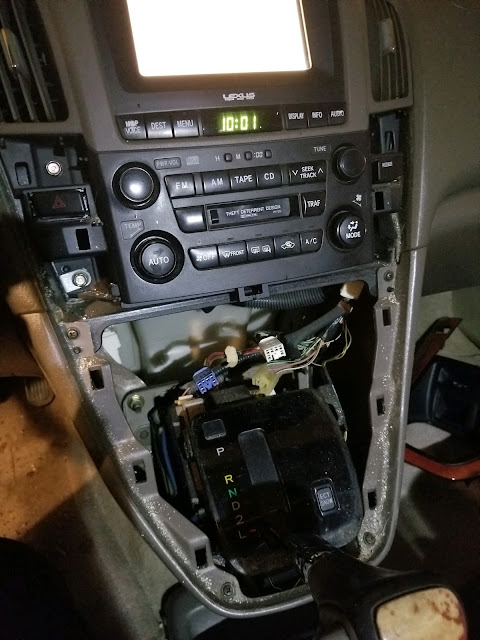Going into this I was convinced that the backlight for the display was failing, causing the display to flash. So, yesterday I disassembled the display, and removed the screen, and backlight portion of the display module. The high voltage section of the backlight driver has a copper shield over it that I had to remove to get to the pulse transformers that generate the high voltage for the florescent tube backlight. Once the shield was removed I was able inspect the electronics for the backlight driver, and to reflow the solder on all the major components there. I didn't find any evidence of a breakdown in that area, so I re-assembled the display, and then re-installed it in the RX to test it.
While I was testing the display the backlight seemed to be on continuously, and now it looked like the data was causing the blanking effect that I had mistaken for the backlight failing. When the RX is cold I only get information for a little while. The data is displayed, and then the data seems to stop, the screen goes black, and then the data comes back. This continues until I loose data altogether, and then the screen is blank, except for the backlight, which remains lit. The nature of this failure, being intermittent, and dependent on temperature, makes me think that it is an intermittent in the connections between the computer, and the display. So, the next course of action is to open all the connections from the display to the computer, inspect them, clean them, then re-assemble everything, and test it again.
We must dig deeper... Imma go to Altex, and get some contact cleaner. I also use isopropanol as a cleaning agent for contacts. A pencil eraser will also do a good job on contacts if they are large enough to put a pencil eraser on them. The connections I am dealing with now are small pitch surface mounted connectors, and flex cables, so we will have to use a chemical cleaner this time.







